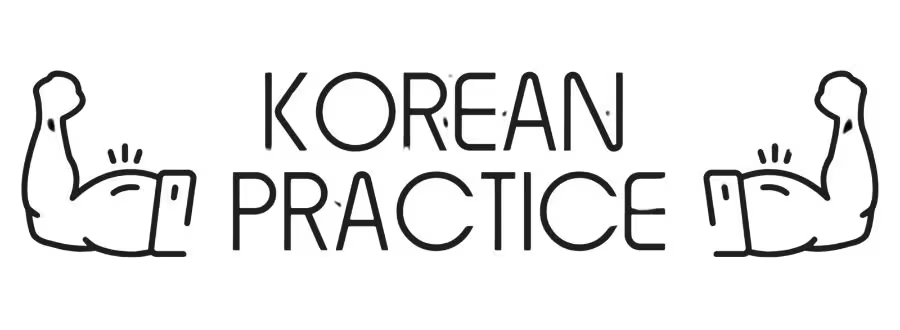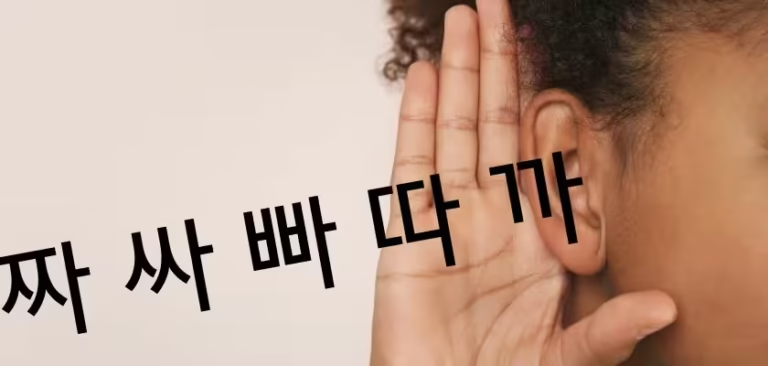Suh ChangWhoon
Written by 서 창훈, a certified Korean teacher with 14+ years of experience in Japan. He previously worked as a government officer, cybersecurity consultant, and English interpreter. Today, he teaches Korean in real classrooms without complex grammar explanations — instead, he trains students’ brains to speak naturally. His unique method is now the foundation of all his Korean courses.
Table of Contents
🔹 Introduction
In Korean, syllables can end with a final consonant, called 받침 (batchim).
This final sound sits under the syllable block — and it makes the word feel complete.
For example:
가 (ga) → no final consonant
각 (gak) → with final consonant ㄱ
Just like the English word “pin” ends in “n,”
Korean syllables can end with sounds like ㄱ, ㄴ, ㅁ, ㅇ, and more.
These are called 받침 — and they’re part of what makes Korean pronunciation unique.
Meet Korean final consonants
- Good news: You don’t need to learn any new letters!
- Korean final consonants are made from the same 14 basic consonants you’ve already studied.
But here’s the catch:
When Korean final consonants appear at the bottom of a syllable, their pronunciation changes slightly. - Let’s take a look:
Consonant Initial Sound (Start of Word) Final Sound (받침) ㄱ g (고 = go) k (각 = gak) ㄴ n (나 = na) n (간 = gan) ㄷ d (다 = da) t (닫 = dat) ㄹ r/l (라 = ra) l (발 = bal) ㅁ m (마 = ma) m (밤 = bam) ㅂ b (바 = ba) p (밥 = bap) ㅅ s (사 = sa) t (옷 = ot) ㅇ silent (아 = a) ng (방 = bang) ㅈ j (자 = ja) t (빚 = bit) ㅊ ch (차 = cha) t (갗 = gat) ㅋ k (카 = ka) k (엌 = eok) ㅌ t (타 = ta) t (붙 = but) ㅍ p (파 = pa) p (앞 = ap) ㅎ h (하 = ha) t (얗 = yat)
Compare the Difference: No 받침 vs With 받침
I’ll show you two similar words:
One without a final consonant
One with a final consonant (받침)
Listen closely and feel the difference.
1. Final K Sound (ㄱ, ㅋ)
나비 (na-bi) — no final consonant (“butterfly”)
먹다 (meok-da) — with final consonant ㄱ (“to eat”)
모자 (mo-ja) — no final consonant (“hat”)
부엌 (bu-eok) — with final consonant ㅋ (“kitchen”)
고기 (go-gi) — no final consonant (“meat”)
각 (gak) — with final consonant ㄱ (“each”)
2. Final T Sound (ㄷ, ㅅ, ㅈ, ㅊ, ㅌ, ㅎ)
아기 (a-gi) — no final consonant (“baby”)
옷 (ot) — with final consonant ㅅ (“clothes”)
바지 (ba-ji) — no final consonant (“pants”)
꽃 (kkot) — with final consonant ㅊ (“flower”)
코끼리 (ko-kki-ri) — no final consonant (“elephant”)
닫다 (dat-da) — with final consonant ㄷ (“close”)
3. Final P Sound (ㅂ, ㅍ)
우유 (u-yu) — no final consonant (“milk”)
밥 (bap) — with final consonant ㅂ (“rice”)
사과 (sa-gwa) — no final consonant (“apple”)
앞 (ap) — with final consonant ㅍ (“front”)
가위 (ga-wi) — no final consonant (“scissors”)
무릎 (mu-reup) — with final consonant ㅍ (“knees”)
4. Final M Sound (ㅁ)
고구마 (go-gu-ma) — no final consonant (“sweet potato”)
밤 (bam) — with final consonant ㅁ (“night” or “chestnut”)
바나나 (ba-na-na) — no final consonant (“banana”)
몸 (mom) — with final consonant ㅁ (“body”)
토마토 (to-ma-to) — no final consonant (“tomato”)
솜 (som) — with final consonant ㅁ (“cotton”)
5. Final N Sound (ㄴ)
아보카도 (a-bo-ka-do) — no final consonant (“avocado”)
눈 (nun) — with final consonant ㄴ (“snow” or “eye”)
라디오 (ra-di-o) — no final consonant (“radio”)
산 (san) — with final consonant ㄴ (“mountain”)
마요네즈 (ma-yo-ne-jeu) — no final consonant (“mayonnaise”)
문 (mun) — with final consonant ㄴ (“door”)
6. Final L Sound (ㄹ)
두부 (du-bu) — no final consonant (“tofu”)
달 (dal) — with final consonant ㄹ (“moon”)
나무 (na-mu) — no final consonant (“tree”)
별 (byeol) — with final consonant ㄹ (“star”)
우산 (u-san) — no final consonant (“umbrella”)
길 (gil) — with final consonant ㄹ (“road”)
7. Final NG Sound (ㅇ)
아이 (a-i) — no final consonant (“child”)
방 (bang) — with final consonant ㅇ (“room”)
오이 (o-i) — no final consonant (“cucumber”)
공 (gong) — with final consonant ㅇ (“ball”)
치마 (chi-ma) — no final consonant (“skirt”)
병 (byeong) — with final consonant ㅇ (“bottle” or “illness”)
Most Korean courses stop at grammar. Mine goes further — stories, breakdowns, and actual practice to make you speak.
Short Story: 바람 부는 날
Let’s feel how Korean final consonants actually sound in real sentences — not just syllables.
A: 바람이 불어.
B: 오늘 날씨가 춥네.
A: 집에 일찍 가자.

Example
Original Korean Sentence
바람이 불어.
Pronunciation Guide
바라미 (ba-ra-mi) 부러 (bu-reo).
Meaning and Context
바람 (wind) 이 (subject marker; I’m going to talk about the wind) 불 (to blow) 어 (I’m telling you casually).
Grammar
* -어: Casual speech ending for present tense.
English Translation
The wind is blowing.
Literal Translation
Wind blow.
Original Korean Sentence
오늘 날씨가 춥네.
Pronunciation Guide
오늘 (o-neul) 날씨가 (nal-ssi-ga) 춥네 (chup-ne).
Meaning and Context
오늘 (today) 날씨 (weather) 가 (subject marker; my subject is today weather) 춥 (to be cold) 네 (is; exclamation indicating a feeling or realization).
Culture
* -네 is often used when noticing something new or sharing a feeling.
English Translation
The weather is cold today, isn’t it?
Literal Translation
Today, weather is cold (I notice).
Original Korean Sentence
집에 일찍 가자.
Pronunciation Guide
지베 (ji-be) 일찍 (il-jjik) 가자 (ga-ja).
Meaning and Context
집 (house/home) 에 (to/towards) 일찍 (early) 가 (to go) 자 (let’s; in a casual way).
English Translation
Let’s go home early.
Literal Translation
Let’s go to home early.
Teacher’s Insight: Don’t Overthink 받침
As a Korean teacher with 14+ years of experience, here’s what I want to say:
받침 isn’t a Korean-only invention.
Korean final consonants are just a natural result of how the human vocal system works.
We can:
close the throat (like ㅇ or ㄱ),
stop the air in the mouth (like ㅂ or ㄷ),
or let the tongue rest (like ㄴ or ㄹ).
It’s the same in every language — we just call them different things.
So don’t treat 받침 like some alien sound system.
And definitely don’t study them like robots.
Let your body do the work.
When your throat feels tight, you’ll automatically find easier, more natural ways to pronounce.
Trust that instinct.
Korean final consonants are not a science experiment.
They’re just human sounds.
Most Korean courses stop at grammar. Mine goes further — stories, breakdowns, and actual practice to make you speak.
In a Nutshell
Korean final consonants like ㄱ, ㄴ, ㅂ, ㅁ, and ㅇ aren’t unique to Korean.
You already have them in your body — you just need to unlock them.
The secret?
Stop trying to be precise.
Start trying to be comfortable.
Because pronunciation isn’t about showing off what you know.
It’s about being understood — and sounding like yourself, in Korean.
Sign up for my newsletter and get
📖 Korean short stories
🎧 Listening practice with audio
❓ Vocabulary and grammar quizzes
🎁 Free courses
📝 Blog updates
– all delivered straight to your inbox!








